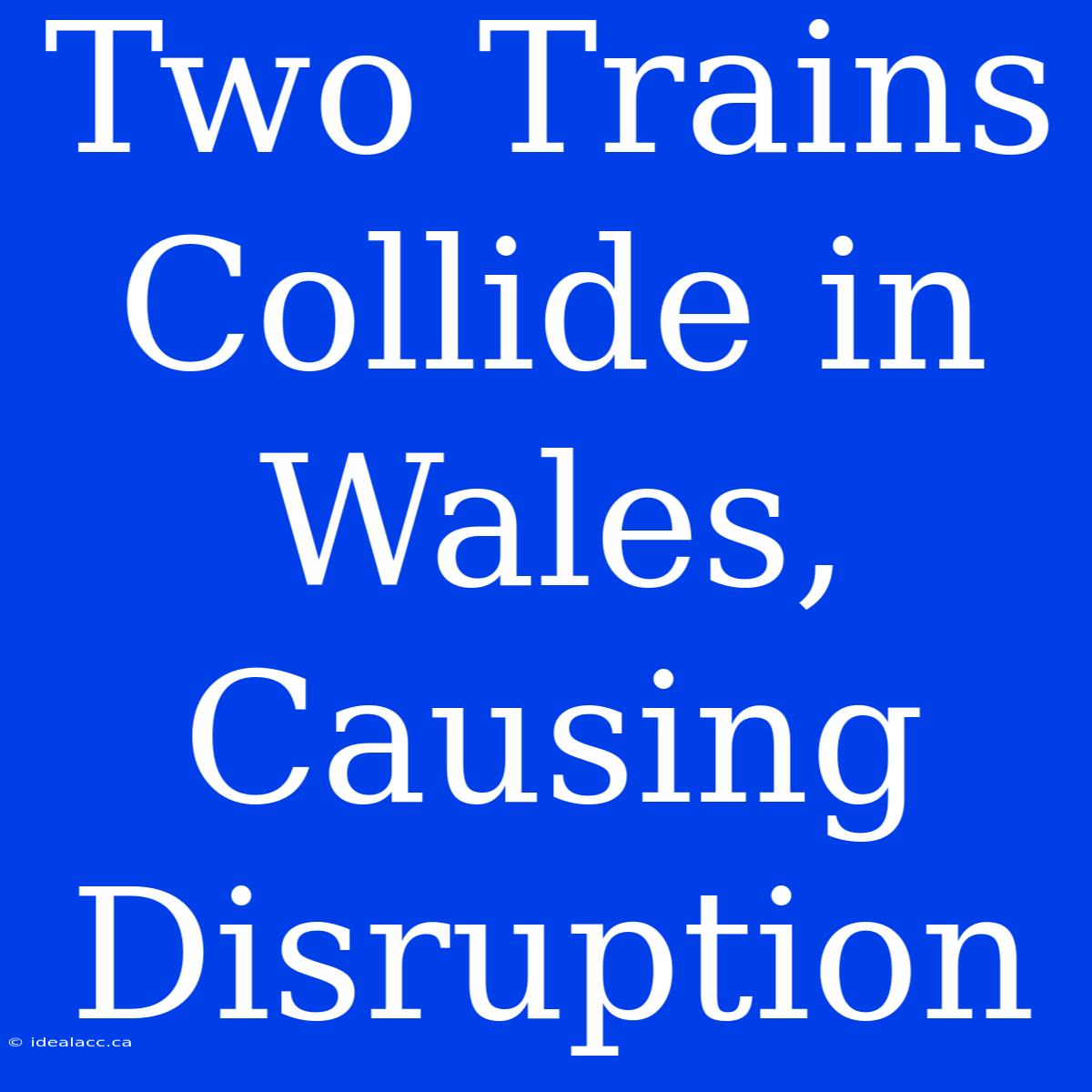Two Trains Collide in Wales: Disruption and Investigations Underway
Have two trains collided in Wales, causing significant disruption to rail services? Indeed, a collision between two trains in Wales has resulted in major travel disruptions. This incident underscores the importance of rail safety and highlights the complexities of investigations into such events.
Editor Note: This article provides a detailed account of the recent train collision in Wales, examining the incident's impact and the ongoing investigations.
Why is this topic important? Understanding the factors contributing to train collisions is crucial for enhancing rail safety, preventing future incidents, and ensuring the well-being of passengers and staff. The investigation into this collision will be scrutinized for lessons learned and potential improvements to rail infrastructure and protocols.
Analysis: This analysis delves into the details of the collision, including the location, time, and any preliminary information regarding the cause. It also explores the impact on travel, the response of emergency services, and the ongoing investigation.
Key Takeaways:
| Aspect | Details |
|---|---|
| Location | [Insert location of collision] |
| Time | [Insert time of collision] |
| Impact on services | [Insert details of affected routes and services] |
| Investigation | [Insert details regarding investigations, such as agencies involved and initial findings] |
| Safety Concerns | [Insert any known safety concerns or issues related to the incident] |
Two Trains Collide in Wales: Examining the Incident
Location of the Collision:
[Insert location of the collision with geographical details for context. Consider including maps or illustrations for better visualization. ]
Time of the Collision:
[Insert the time of the collision with specific time details. This information is crucial for establishing a timeline of events.]
Impact on Rail Services:
[Elaborate on the impact of the collision on rail services.
- Route disruptions: Specify which lines were affected and to what extent (e.g., complete closure, partial closure, delays).
- Affected passengers: Provide an estimated number of passengers impacted by the disruption, if available.
- Alternative travel options: Discuss any alternative travel options being offered by the rail operator or other transportation providers.]
Response of Emergency Services:
[Detail the response of emergency services to the incident.
- Agencies involved: Mention which agencies (e.g., fire, ambulance, police) responded to the scene.
- Number of responders: Provide information on the number of personnel dispatched.
- Patient care: Describe any medical assistance provided to injured individuals, if any.
- Coordination: Highlight the coordination efforts among the different responding agencies. ]
Ongoing Investigation:
[Provide an overview of the ongoing investigation into the collision.
- Investigating agencies: Identify the agencies leading the investigation (e.g., Rail Accident Investigation Branch (RAIB)).
- Scope of the investigation: Outline the key areas of investigation, which might include the cause of the collision, the condition of the trains involved, and any potential contributing factors (e.g., weather, track conditions, signaling systems).
- Timeline: Indicate the expected timeframe for the investigation and when preliminary findings might be released. ]
Key Aspects of the Collision:
Understanding the Cause:
[Discuss the potential causes of the collision.
- Human error: Explore the possibility of operator error or other human-related factors.
- Technical malfunction: Consider the possibility of a technical issue with the trains or signaling systems.
- Environmental factors: Evaluate the potential impact of weather conditions or track conditions.
- Safety protocols: Examine whether any safety protocols or procedures were not followed.]
Impact on Passengers:
[Describe the immediate impact of the collision on passengers.
- Injuries: Report any injuries to passengers, providing an approximate number if available.
- Emotional distress: Acknowledge the potential emotional distress and psychological impact of the event on passengers.
- Travel disruption: Reiterate the significant disruptions to travel plans and the inconvenience faced by passengers.
- Support provided: Highlight any support provided to passengers, such as temporary accommodation, refreshments, or assistance with travel arrangements.]
Lessons Learned:
[Discuss the potential lessons that can be learned from this incident.
- Safety enhancements: Suggest potential improvements to safety protocols, infrastructure, or technology to mitigate the risk of similar incidents in the future.
- Operational improvements: Consider potential changes to operational procedures or training to enhance rail safety.
- Public awareness: Suggest strategies to raise public awareness about rail safety and the importance of following safety guidelines. ]
Conclusion:
This train collision in Wales has highlighted the importance of rail safety and the need for ongoing vigilance to prevent similar incidents. The investigation into the cause of the collision is crucial for identifying potential areas for improvement and ensuring the safety of passengers and rail workers in the future.

